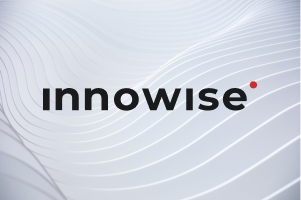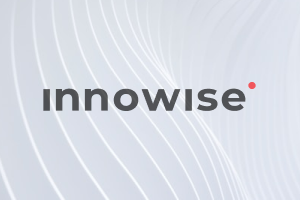Your message has been sent.
We’ll process your request and contact you back as soon as possible.
The form has been successfully submitted.
Please find further information in your mailbox.


If there is one universal truth among business owners, it’s this: everybody’s looking for the best price. No matter your size — a startup, a growing company, or a large enterprise — you naturally seek a price that suits your budget. I’m not here to tell you a good deal isn’t worth taking, but software development is a nuanced practice, so there’s more to consider beyond price alone.
To help simplify this decision (and hopefully save you some money!), I’ve put together this guide on how to price software development with the most popular software pricing strategies: fixed price, time & materials (T&M), dedicated teams, and more.
A software pricing model is a strategic approach that influences everything from project timelines to the quality and scalability of the final product. The model determines the payment structure for the business — one-time payment, subscription payment, or payment based on usage. It also defines how much risk will be taken and how costs will be projected and shared so that all involved parties are safeguarded.
I’ve identified 7 of the most common software development pricing models you’ll likely come across. Here, we break down the differences, highlighting their benefits, drawbacks, and ideal use cases.
A fixed price model means the price of the software development project is agreed upon upfront, and the scope, timeline, and cost are clearly defined. This software product pricing model is typically used for projects with a well-defined scope and little to no room for changes, and it’s best for SMBs, startups, and small enterprises. Since these businesses often need to manage costs tightly and prefer predictable expenses, a fixed-price model offers them certainty and control over their budget.
With a fixed-price model, the client and vendor agree on a detailed project scope before work begins. Changes in scope can trigger renegotiation of the contract. Since the vendor is incentivized to stick to the scope to avoid extra costs, project management must be very detailed.
Pros
Cons
In a T&M contract, the client is charged based on:
Pros
More control over the project — you can adjust priorities based on market needs
Cons
In the dedicated team model, a client contracts a team of experts that works solely on their project. This team serves as part of the client’s in-house staff in terms of being deeply committed and involved in the project.
Unlike fixed-price or time-and-materials contracts, the client pays a monthly fee covering salaries, administrative costs, and infrastructure. Companies typically need a dedicated development team for ongoing projects.
With a committed team model, businesses are guaranteed technical mastery along with complete control over the development process. Here’s how it works:
Pros
Long-term engagement fosters deeper business insight from the outsourced team
Cons
In the milestone-based software product pricing model, the project is structured into distinct phases, each with clear deliverables and deadlines. Costs are assigned to each milestone based on software pricing factors like complexity, required effort, and resource allocation. Payments are made incrementally, with the client paying only after a milestone is successfully completed and approved.
Pros
Accountability, as each phase is completed before moving forward
Cons
Requires clear scope definition up front
A value-based pricing model sets the price of a product or service based on its perceived value to the client rather than production costs or market rates. Instead of charging based on hours worked or resources used, businesses set prices based on factors such as cost savings, revenue growth, competitive advantage, or overall impact.
This model demands a thorough understanding of the client’s requirements, industry benchmarks, and the unique value proposition of the service or product. It’s best for niche projects with clearly measurable business outcomes.
To implement this model effectively, project managers should:
Pros
Shifted focus from price competition to delivering superior results
Cons
Difficult to define success metrics for software projects
Complex contracts that require constant renegotiation
A subscription pricing model is a payment structure in which customers pay a recurring fee — monthly, quarterly, or annually — to access a product or service. Instead of a one-time purchase, clients commit to ongoing payments for continued usage, support, and updates. This model is widely used for software-as-a-service (SaaS) platforms, streaming services, cloud computing, and professional consulting.
Subscription enterprise software pricing models often include tiered pricing, allowing users to choose different levels of service based on their needs. Companies may also offer custom plans or usage-based pricing with fees varying based on consumption.
Pros
Ideal for DevOps, cloud management, or security services
Cons
Not suitable for one-time custom software development
Customer churn if value isn’t maintained
A revenue-sharing pricing model involves a business and its partners or service providers sharing the revenue generated from a product or service. Instead of a fixed payment, compensation is based on a percentage of the earnings, often aligning the interests of both parties to drive mutual success. This model is commonly used in partnerships, affiliate marketing, licensing deals, and joint ventures.
Managing projects with a revenue-sharing pricing model involves establishing clear terms on how revenue will be tracked, measured, and distributed between the involved parties. Success hinges on aligning incentives to ensure all participants work toward maximizing revenue.
Pros
Aligns incentives — both client and vendor benefit from success
Cons
Rarely used in outsourcing due to high vendor risk
Requires trust and strong legal agreements
Businesses often focus on the initial cost of software development, only to discover hidden expenses later. Here are some common pricing traps and tips on how to avoid them.
Some vendors lure clients with low fixed prices but impose high fees for any extra work. If the initial contract doesn’t account for flexibility, even minor adjustments can become costly.
For example, a growing e-commerce startup hires a vendor to build a custom website. The initial contract includes only the most basic functionality to keep costs low. Midway, the startup realizes it needs additional payment gateways and a custom product filtering system. Each small request incurs a steep fee, quickly inflating the budget beyond what they anticipated.
To avoid this, ensure clear project scope definitions, negotiate reasonable change request terms upfront, and work with vendors who communicate cost implications transparently.
Here’s another potential scenario. A SaaS company selects a development vendor offering an attractive low price for a new feature rollout. The vendor delivers on time, but the code is poorly structured, making future updates a nightmare. Documentation is sparse, and when issues arise post-launch, the vendor is unresponsive. That’s what the “low price trap” looks like.
What can be done to avoid such a frustrating situation? Don’t let a bargain turn into a burden — evaluate vendors based on quality, not just price. Check past projects, client feedback, and post-launch support. Remember that those initial “savings” might cost you more than you bargained for.
Some vendors bill inefficiently, charging for unnecessary time and effort. Without clear tracking, businesses may pay for delays rather than actual progress.
As an example, a mid-sized fintech firm hires a vendor on a time-and-materials basis for a regulatory compliance system. The vendor bills hours liberally but provides vague progress reports. Delays mount, but invoices remain steady.
This isn’t a once-in-a-lifetime situation — it happens more often than you’d expect. But you can avoid it by being proactive and recognizing the risks before they arise. Set clear expectations for reporting and accountability, establish milestones with regular check-ins, and agree on measurable productivity benchmarks. That way, progress stays on track, surprises stay minimal, and everyone stays aligned.
The last example is when a retail brand contracts a vendor to build a mobile app under a rigid fixed-price agreement. Midway, customer feedback reveals the need for an enhanced user experience. However, the contract doesn’t allow modifications without restarting the project or incurring excessive costs. So, what now?
The issue with a fixed-price contract is that it doesn’t allow for mid-project adjustments, leaving businesses with two costly choices: accept subpar results or abandon the project and start over.
Negotiating flexibility for mid-project adjustments while working with adaptable vendors and exploring adaptable but structured software pricing strategies can help avoid these issues.
We’ve got all the proof you need — stellar work, happy clients, and solid support!
Selecting a price model revolves much more around a company’s strategy as well as economics. This decision dramatically impacts parts of the business, such as how and if they can scale, how innovative they can be, and the overall success of the projects in the long run.
Different software development pricing models align with different stages of a business’s growth. For example, a fixed-price model can help businesses control costs in the early stages by offering predictable expenses. However, as businesses scale, particularly those in rapidly changing fields like SaaS or AI, flexibility becomes essential. Fixed-price models can stifle innovation since they don’t account for the need to pivot or adjust features as the business evolves.
On the other hand, time-and-materials or value-based pricing provides more flexibility, allowing businesses to incorporate changes and scale faster. This flexibility promotes innovation as the vendor and client can adjust the scope without being held back by rigid budgets. While these pricing models for software can be harder to manage financially in the short term, they often foster long-term growth through more adaptable and customized solutions.
Fixed-price contracts offer predictable budgeting, which is ideal for well-defined projects with clear deliverables. However, they can be limiting when it comes to accommodating scope changes or unexpected needs. For a company focused on cost containment, a fixed price offers the safety of no unexpected charges, yet it might hinder new ideas and improvements.
T&M pricing might be the best when it comes to flexibility. The reality is while T&M pricing provides the freedom to adapt, it can also lead to budget fluctuations. This unpredictability can cause budget overruns if progress is slower than anticipated or if the scope shifts. However, for businesses that value long-term innovation and ongoing improvement, this pricing model can provide the chance to grow without being stifled by an inflexible contract.
The pricing is not just about numbers. The chosen pricing structure also impacts vendor relationships. Thus, a fixed-price contract creates a clear-cut, transactional relationship, which might work well for a one-time project but can strain long-term collaboration. As the scope expands or changes, the relationship can become more contentious if the vendor feels underpaid or overburdened by scope creep.
Conversely, models like T&M or retainer-based pricing foster a more collaborative relationship, where both the business and vendor share a long-term vision. Continuous feedback and adjustments are very welcomed in terms of these pricing models for software development projects. But (there’s always a BUT) the challenge lies in maintaining clear communication and setting realistic expectations. With ongoing adjustments, it can sometimes feel like the scope and costs are constantly shifting.
“Every project is unique, and a reliable company should offer pricing that works for you. That’s why Innowise keeps software pricing flexible — fixed-price contracts for predictability, time-and-material for when things need to adapt. With years of experience, we guarantee you stay on budget without the headaches”

FinTech Expert
Choosing the best pricing model for your project is challenging because no single approach will work for everyone. The optimal choice relies on your individual goals and opportunities. The following steps will aid you in making a more optimal decision.
If you have a clear vision of the deliverables and the project requirements are set, a fixed-price model can be the best fit. This option offers predictability and helps control costs since you agree on a price set upfront.
However, if the scope is uncertain or you expect frequent changes, a time & materials model would be a better fit. With T&M, you pay for the actual time spent and materials used, making it more flexible for evolving requirements or unknowns in the project.
If it’s a longer-term project or you need specialized skills on an ongoing basis, a dedicated team model may be your best option. With this model, you hire a team that works exclusively on your project, ensuring continuous support and flexibility to scale resources as needed.
For projects that require consistent, regular support or maintenance over time, the subscription/retainer model is ideal. This approach gives you access to ongoing services for a set fee, providing stability and support over an extended period.
If your project will evolve in scope or require frequent adjustments, the time & materials model offers the flexibility to adapt as you go. This model is well-suited for projects with an unclear initial scope or those that are likely to undergo frequent changes.
Alternatively, if your project has clear phases but you still need some flexibility, milestone-based pricing might work better. This model ties payments to the completion of specific project milestones, ensuring progress is tracked while allowing for adjustments as needed.
If your project’s success is primarily based on achieving specific business outcomes — such as revenue growth or improved operational efficiency — then value-based pricing is the most fitting option. With this model, the cost is tied to the results delivered, aligning the interests of both parties toward a mutually beneficial outcome. This approach is inherently efficient, provided that both sides are focused on measurable impacts and outcomes rather than just deliverables.
Finally, consider how you want to manage risk and cost. If you need to maintain strict control over your budget, the fixed price model provides certainty about total costs. This is ideal for projects with a clear scope and minimal expected changes.
On the other hand, if you prefer flexibility and are comfortable managing costs as they accrue, the time & materials model offers a way to pay for actual work done, with the trade-off being less predictability.
The best model will depend on your project’s unique scope, risk tolerance, and long-term vision. To see how we approach these decisions, take a look at how we work at Innowise.
Choosing the right enterprise software pricing for your project is all about finding what fits you. Break down the different options, weighing the pros and cons for each scenario. Stay flexible and open to adjustments, but never lose sight of your key priorities.
One small note here: when you align your vision with a trusted partner, the path forward becomes clearer, and the project becomes more manageable. Find a reliable partner — Innowise can be the best choice — and discuss every concern no matter how small.












Your message has been sent.
We’ll process your request and contact you back as soon as possible.

By signing up you agree to our Privacy Policy, including the use of cookies and transfer of your personal information.